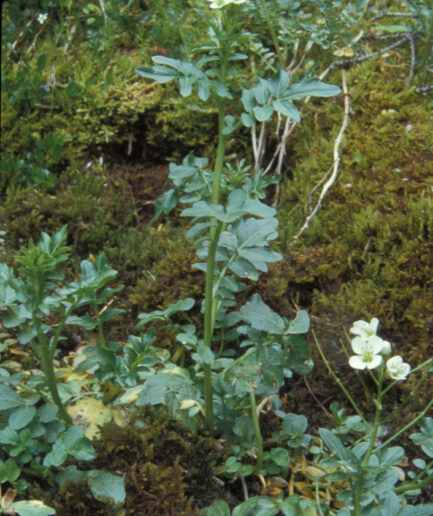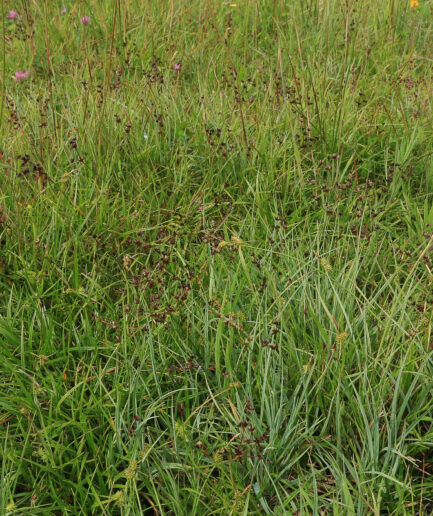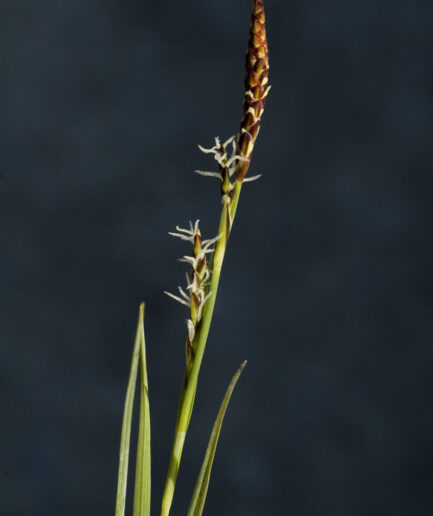Marsh marigold
Scientific name: Caltha palustris L.
Family: Ranunculaceae
MORPHOLOGY
Growth habit and size: Perennial herbaceous plant, 15-40 cm tall, with rhizomatous roots.
Stem: Fleshy, leafy, erect, striated, tubular stems, glabrous, climbing, with adventitious roots at the nodes.
Leaves: The basal leaves are deciduous, long petiolate (5-20 cm), with an entire, cordate blade, finely crenate or dentate or weakly lobed, undulating, scalloped, palmately veined, fleshy, and bright green; the cauline leaves are progressively smaller, reniform, with a petiole that shortens progressively, becoming subsessile.
Flowers: Hermaphroditic and actinomorphic flowers, 2-7 in number, with a diameter of 2.5-4 cm, borne on peduncles of 2-5 cm, arranged in corymbose cymes at the stem tips. They have a monoclamidate perianth with a single whorl of 5-8 petaloid pieces (sepals), bright egg-yellow to golden-yellow, sometimes greenish on the back; numerous yellow stamens arranged spirally, shorter than the sepals; gynoecium with 4-10 whorled and fused carpels in the lower half. It blooms from February to June.
Fruits and seeds: Dark red spherical berries, 7-14 mm in diameter.
The fruit is a glabrous follicle cluster, composed of 10 compressed and flat follicles.
DISTRIBUTION AND HABITAT
It grows throughout Italy except in Sicily, Puglia and Marche, from sea level to over 2,000 m. It thrives in moist areas and along riverbanks.
USE
Its active ingredients—saponins, flavonoids, and choline—give the plant anti-rheumatic, antispasmodic, diaphoretic, expectorant, rubefacient, diuretic, irritant, pain-relieving, and wart-removing properties. It is used in tinctures and poultices for external use and in homeopathic medicine to treat dermatitis and skin eruptions. The flower buds were once used as condiments after being dried and pickled with spices, but because of the presence of toxic saponins, their domestic use is advised against. Dried flowers, when treated with appropriate reagents, provide a yellow dye. Before taking any plant-based product (medicinal or non-medicinal) for therapeutic or similar purposes, it is always advisable to consult a doctor.
Photo: Kindly provided by Claudio Farinati























